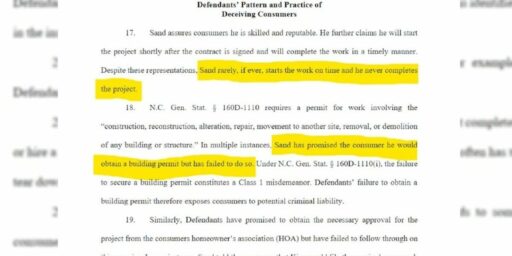Embarking on an interior remodeling project can be both exciting and overwhelming. With the right guide, navigating the journey to transform your space becomes less daunting. This ultimate guide provides you with a comprehensive approach to finding the best interior remodeling contractors. From setting clear goals to evaluating the finished work, we ensure you have all the necessary tools to make informed decisions and achieve the results you desire for your home.
Key Takeaways
- Clearly define your remodeling goals and budget to streamline the selection process of contractors.
- Thoroughly research potential contractors’ credentials, reviews, and work history to ensure quality and reliability.
- Conduct detailed interviews and compare bids to find a contractor who aligns with your vision and budget.
- Understand and negotiate contract terms to protect your interests and ensure legal compliance.
- After remodeling, assess the work quality and provide feedback, ensuring proper maintenance for lasting results.
Understanding the Basics of Interior Remodeling

Defining Your Remodeling Goals
Before embarking on an interior remodeling project, it’s crucial to define your remodeling goals. This initial step is about understanding what you want to achieve with your remodel. Whether it’s updating the look, increasing functionality, or enhancing the value of your home, clear goals will guide your decisions throughout the process.
- Set your goals
- Create a budget
- Gather inspiration and ideas
- Hire the right subcontractors
- Develop a detailed plan
- Consider functionality and efficiency
- Select materials and finishes carefully
- Communicate effectively
- Monitor the progress
- Evaluate the results against your initial goals
Defining your goals not only provides direction but also helps in communicating your vision to potential contractors. It ensures that everyone involved is aligned with your expectations and working towards the same outcome.
Remember, a well-defined goal is the foundation of a successful remodel. It influences your choice of materials, the design, and even the contractors you select. For instance, if you’re aiming for a high-end transformation, focusing on quality and luxury finishes is key. Conversely, if efficiency is a priority, you might opt for energy-saving features and smart home technology. Always revisit your goals at the end of the project to evaluate the success of the remodel.
Types of Remodeling Contractors
When embarking on an interior remodeling project, it’s crucial to understand the different types of contractors available to you. General contractors manage the overall project and often work with subcontractors who specialize in specific areas. On the other hand, remodeling contractors focus specifically on renovation projects and may offer more specialized services.
- General Contractors: Oversee entire projects, handle various tasks, and coordinate with subcontractors.
- Remodeling Contractors: Specialize in renovations, often providing design and construction services for specific areas like kitchens or bathrooms.
Choosing the right type of contractor depends on the scope and complexity of your project. For comprehensive renovations, a general contractor might be the best fit, while a remodeling contractor could be ideal for targeted improvements. Ensure that the contractor you select has a proven track record and the necessary skills to bring your vision to life.
It’s essential to match the contractor’s expertise with the needs of your project to achieve the best results. Consider the scale of your renovation and whether it requires specialized skills or a more general approach.
Setting a Realistic Budget
When embarking on an interior remodeling project, establishing a realistic budget is crucial to ensure that your renovation dreams align with your financial reality. Start by evaluating the total amount you are willing to allocate for the remodel. This includes considering the condition of your property and the desired outcome of your renovation.
It’s essential to prioritize spending on high-ROI remodeling projects that will enhance your home’s value.
Next, break down your budget to account for different expenses. This should cover everything from materials and labor to permits and design fees. Here’s a simple breakdown to guide you:
- Materials: The quality and type of materials can significantly affect costs.
- Labor: Factor in the cost of skilled labor, which can vary widely.
- Design: If hiring a designer, include their fees in your budget.
- Permits: Don’t forget to allocate funds for necessary permits.
- Contingencies: Lastly, reserve a portion of your budget, typically around 10%, for unforeseen expenses. This contingency will help you manage any unexpected costs without derailing your project.
How to Vet Potential Remodeling Contractors

Researching Contractor Credentials
When embarking on the journey to find the best interior remodeling contractor, verifying their credentials is a critical first step. Ensure that each contractor on your shortlist is licensed, insured, and bonded, as this will safeguard you against potential liabilities. A legitimate contractor should readily provide their license number and proof of insurance.
- Verify credentials: Check for proper licensing and insurance.
- Examine portfolios: Review past projects to assess quality and style.
- Seek references: Ask for and follow up with client references.
It’s essential to not only trust what you see on paper but also to follow up with past clients to get a real sense of the contractor’s reliability and the quality of their work.
Utilize online platforms to read customer reviews and ratings, which can offer valuable insights into the contractor’s reputation. While occasional negative feedback is normal, a predominance of positive reviews typically indicates a trustworthy contractor. Remember, a clean and organized worksite often reflects the overall management and execution of a project.
Reading Reviews and Testimonials
When embarking on the journey to find the best interior remodeling contractor, reading reviews and testimonials is a pivotal step. Utilize online platforms such as review websites, social media, and professional directories to gather more information about local contractors. Authentic customer reviews and ratings can provide a clear picture of a contractor’s reputation and the quality of their work. While a few negative reviews may be inevitable, an overwhelmingly positive reputation is a strong indicator of reliability and professionalism.
It’s essential to approach reviews with a critical eye, understanding that personal tastes and experiences can vary greatly. What one person may consider a flaw, another might see as a unique feature.
Here’s a quick checklist to help you navigate through reviews effectively:
- Look for a consistent pattern of satisfaction across various platforms.
- Pay attention to how contractors respond to both positive and negative feedback.
- Check for mentions of specific aspects like punctuality, cleanliness, and communication.
- Seek out video testimonials or detailed accounts of past projects to get a sense of the contractor’s approach.
Remember, reviews are just one piece of the puzzle. They should be combined with other vetting methods to ensure you find a contractor that aligns with your vision and expectations.
Conducting Interviews and Comparing Bids
Once you’ve shortlisted potential contractors, it’s crucial to conduct thorough interviews and compare their bids. This step is not just about finding the lowest price, but also about ensuring quality and reliability. Start by inviting your top choices for in-person consultations to discuss your project details and requirements. This face-to-face interaction is invaluable for assessing their professionalism and communication style.
When comparing bids, consider creating a comparison chart to help you evaluate each contractor’s offer systematically. Here’s an example of what your chart might look like:
| Contractor | Estimated Cost | Timeframe | Included Services | Additional Notes |
|---|---|---|---|---|
| A | $10,000 | 8 weeks | Full remodel | Uses eco-friendly materials |
| B | $9,500 | 10 weeks | Kitchen and bath | Known for punctuality |
| C | $11,000 | 7 weeks | Custom design | Offers warranty |
Remember, the goal is to find a balance between cost, quality, and timeline. Don’t hesitate to ask for references and reach out to past clients to hear about their experiences firsthand.
Finally, ensure that you understand the scope of work each bid covers. Be wary of bids that are significantly lower than others, as they may not include all necessary tasks or may indicate lower quality materials. It’s essential to clarify any ambiguities and ask the right questions to avoid unexpected costs and ensure a smooth remodeling experience.
Navigating Contracts and Agreements

Understanding Contract Terms
When entering into a remodeling project, understanding the contract terms is crucial for a successful partnership between you and your contractor. Contracts can be complex, but they are designed to protect both parties involved. It’s important to look for key elements that should be included in every remodeling contract to ensure clarity and prevent future disputes.
- Scope of Work: Clearly defines what will be done, including materials and tasks.
- Payment Schedule: Outlines when and how payments will be made.
- Warranties and Insurance: Details the guarantees provided and the insurance coverage.
- Licenses: Confirms that the contractor is legally permitted to perform the work.
Before signing any agreement, take the time to review the contract thoroughly. Ensure it includes all project details, timelines, and costs. If there are sections that are not clear or if you have any doubts, do not hesitate to seek clarification.
Remember, you may be asked to put down a retainer or deposit before work begins, and regular payments will be made when certain milestones are reached. Be aware that if you’re working with an architect and a contractor, you may need to sign separate contracts with each, each with its own terms and payment schedule. Always avoid the trap of working with an unlicensed contractor, as this can lead to numerous legal and financial complications.
Negotiating the Best Deal
Negotiating with potential remodeling contractors is a critical step in ensuring that you get the best value for your investment. Always insist on a written contract that clearly outlines the scope of work, payment schedule, and any other important details. This not only provides clarity for both parties but also serves as a legal document in case of disputes.
- Evaluate Quotes and Services: Don’t just look at the bottom line; consider the quality and scope of services offered.
- Read the Contract Carefully: Ensure all project details, timelines, and costs are included.
- Clarify Doubts: Never hesitate to ask questions or seek clarifications before signing.
Remember, the lowest quote may not always represent the best deal. Quality, experience, and reliability are equally important. Payment terms should be structured to align with project milestones, and it’s advisable to avoid paying the full amount upfront.
Once you’ve reviewed all the bids and services, and after thorough discussions with all stakeholders, choose the contractor that best fits your needs and budget. The contract should establish a clear payment schedule, typically requiring an upfront payment of 25 to 50 percent, with subsequent payments tied to project milestones.
Ensuring Legal and Regulatory Compliance
When selecting a remodeling contractor, ensuring legal and regulatory compliance is crucial for a smooth and lawful renovation process. Begin by verifying insurance coverage and licenses; this is a non-negotiable step. Request and scrutinize the Certificates of Insurance (COIs) to confirm that the contractor’s insurance is valid, current, and adequate for the scope of your project.
It’s essential to check that the insurance policies are in the name of the contractor’s LLC, as discrepancies can lead to complications should an incident occur.
Additionally, confirm the contractor’s credentials and licensing. They should be registered with local authorities and possess the necessary permits. A trustworthy contractor will readily provide their license number and insurance details. Avoid falling into the ‘unlicensed contractor trap’ as it can lead to significant risks and liabilities.
Remember, clear communication and professionalism from your contractor are indicative of their commitment to compliance and quality. Ensure that all agreements are in writing, including detailed estimates and contracts, to protect both parties.
Preparing for the Remodeling Process

Planning Your Project Timeline
A well-planned project timeline is crucial for a smooth remodeling experience. Start planning 2 to 3 months before your intended start date to ensure all aspects of the project are accounted for. Begin by choosing a start date and, if necessary, work backward from a desired completion date. Consult with your contractors to understand the duration of each project phase and the order in which they must be completed.
Your timeline should include key elements such as:
- Time to clear the project area
- Shipping and delivery of materials
- Contractor holidays
- Extra days for unexpected issues
Consider creating a visual representation, like a Gantt chart, to track the phases of your remodel. This can help you and your contractor stay on schedule and manage the many dependencies that come with remodeling. Remember, some phases cannot begin until the previous ones are completed, and materials and subcontractors need to be scheduled appropriately.
It’s essential to have a buffer in your timeline for each step of the process. This allows for flexibility in case of unforeseen delays or issues that may arise during the remodel.
Coordinating with Your Contractor
Effective coordination with your contractor is pivotal to the success of your interior remodeling project. Regular communication is the cornerstone of a well-coordinated effort, ensuring that both you and the contractor are aligned on the project’s goals, timeline, and any specific details or requests.
Establishing a preferred method of communication is crucial. Whether it’s through email, phone calls, or in-person meetings, having a clear channel will help avoid confusion and ensure timely responses.
Here are some key points to consider for smooth coordination:
- Regular check-ins: Schedule regular check-ins with your contractor to discuss progress, address any concerns, and make sure everything is on track.
- Be open to feedback: Effective communication goes both ways. Be open to feedback from your contractor and address any issues that may arise in a timely manner.
- Change orders: Be prepared for changes that may need to be addressed through change orders. These should be documented and agreed upon by both parties.
By taking the time to research and compare different contractors and communicate effectively with your chosen contractor, you can turn your home renovation dreams into reality.
Handling Disruptions and Setbacks
During any interior remodeling project, expect the unexpected. Disruptions and setbacks are a natural part of the process, and being prepared can make a significant difference. Keep an open mind and be adaptable to the contractor’s schedule, as flexibility can help mitigate delays.
It’s crucial to have a contingency plan in place. This includes setting aside a portion of your budget for unforeseen expenses and allowing extra time in your project timeline for addressing issues like structural rot, termites, or an unstable foundation that may be discovered once construction begins.
Remember, even with the most meticulous planning, problems may arise. Here’s a list of common renovation problems to watch for:
- Structural issues uncovered during construction
- Delays in material delivery
- Unavailability of subcontractors
- Change orders due to unforeseen conditions
By anticipating these potential problems and incorporating them into your planning, you can reduce stress and maintain control over the remodeling process.
Post-Remodeling: Evaluating the Outcome

Assessing the Quality of Work
Once the dust has settled and the contractors have packed up, it’s time to evaluate the craftsmanship and outcome of your interior remodeling project. A thorough assessment is crucial to ensure that the work meets your expectations and the standards promised by the contractor. Start by reviewing the contractor’s portfolio and past projects, focusing on those similar to yours. This will give you an insight into their expertise and the quality you should expect.
When assessing the quality of work, consider creating a scoring rubric based on specific criteria such as responsiveness, communication, and professionalism. For example, rate the contractor on a scale from 1 to 5 on how quickly they respond to emails and questions, and how clearly they communicate project details. This structured approach helps in making an objective evaluation.
Pay special attention to the finish and detail in the portfolio of work. The level of finish can be indicative of the overall quality you can expect in your own project.
It’s also beneficial to visit a work in progress that is similar to your project. Observe the site’s cleanliness, organization, and the behavior of the workers. A positive atmosphere and professional demeanor are good indicators of a well-managed project. Lastly, don’t forget to check online reviews and testimonials to gauge the experiences of previous clients, keeping in mind that opinions on quality can be subjective.
Providing Feedback and Reviews
After the completion of your interior remodeling project, providing feedback and reviews is a crucial step. It not only helps future clients make informed decisions but also holds contractors accountable for their work. Utilizing online platforms for reviews can offer valuable insights into a contractor’s performance and reliability.
When leaving a review, be honest and detailed about your experience. Highlight what went well and what could have been improved. This constructive feedback is beneficial for both the contractor’s growth and for potential clients.
Here’s a simple guide to structuring your review:
- Start with a brief overview of the project
- Discuss the communication and professionalism of the contractor
- Evaluate the quality of work and whether it met your expectations
- Mention the adherence to the timeline and budget
- Conclude with your overall satisfaction and any recommendations
Remember, your review can significantly influence someone’s decision to hire a contractor, so take the time to reflect on your experience and share it thoughtfully.
Maintenance and Upkeep of Remodeled Spaces
Once the dust has settled and the contractors have packed up, your newly remodeled space will require regular maintenance and upkeep to preserve its beauty and functionality. This involves routine cleaning, periodic checks of fixtures and appliances, and addressing any wear and tear that occurs over time.
- Routine Cleaning: Keep surfaces dust-free and clean to prevent damage and maintain appearance.
- Periodic Checks: Regularly inspect fixtures, appliances, and structural elements for any signs of malfunction or deterioration.
- Wear and Tear: Address issues such as scratches, dents, or fading as soon as they arise to avoid more extensive repairs later.
Maintaining your remodeled space is not just about aesthetics; it’s about ensuring the longevity and performance of the investment you’ve made. Regular upkeep can prevent small problems from becoming costly repairs.
Remember to refer to any specific maintenance guidelines provided by your contractor or the manufacturers of installed products. This will ensure that you are caring for materials and appliances correctly, which can also affect warranties and guarantees.
Conclusion
Embarking on an interior remodeling project can be both exciting and daunting. Throughout this guide, we’ve equipped you with the knowledge to navigate the process of finding the best remodeling contractors with confidence. From understanding the importance of experience and expertise to the significance of thorough research and vetting, we’ve covered the essential steps to ensure you make an informed decision. Remember, the right contractor will not only bring your vision to life but also add long-term value to your home. Take the time to ask for recommendations, verify credentials, and communicate your needs clearly. With these insights and tips, you’re now ready to transform your space into the home of your dreams.
Frequently Asked Questions
How do I define my remodeling goals?
Start by considering what you want to achieve with your remodel, such as updating the style, improving functionality, or increasing your home’s value. Prioritize your needs and desires, and use these as a foundation when discussing your project with potential contractors.
What types of remodeling contractors are there?
There are general contractors who oversee the entire project, specialized contractors who focus on specific areas like kitchens or bathrooms, and design-build firms that offer both design and construction services.
How should I set a realistic budget for my remodel?
Research the average cost of similar remodeling projects, factor in materials and labor, and set aside a contingency fund for unexpected expenses. Be upfront with contractors about your budget constraints during the bidding process.
What should I look for when researching remodeling contractor credentials?
Verify their licenses, insurance, and bonding status. Check their track record for similar projects and ensure they have good standing with professional associations and consumer protection agencies.
How do I ensure legal and regulatory compliance in my remodeling contract?
Make sure the contract includes detailed descriptions of the work, payment schedules, and compliance with local building codes and permits. Consult with a legal professional if necessary to understand all terms and conditions.
What are some tips for handling disruptions and setbacks during the remodeling process?
Maintain open communication with your contractor, adjust your project timeline as needed, and have a backup plan for living arrangements if the disruption is significant. Stay flexible and patient, as some setbacks are inevitable.





